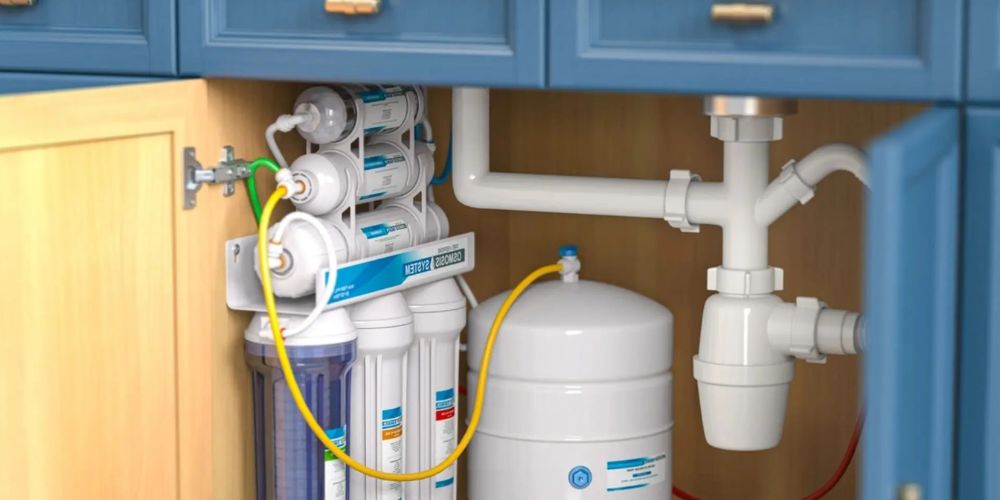Reverse Osmosis (RO) water purifiers are widely recognized for their ability to provide clean and safe drinking water. One of the critical aspects of maintaining an RO system is the timely replacement of its filters. Over time, filters can become clogged with impurities, affecting the water’s quality and taste. But how do you know when it’s time to replace your RO filters? In this comprehensive guide, we’ll explore the signs indicating it’s time for a replacement, the different types of filters in your RO system, and best practices for maintenance.
Understanding the Types of RO Filters
An RO system typically consists of several filters, each playing a specific role in the purification process:
- Pre-Filters: These are usually sediment filters that remove larger particles, such as dirt, sand, and rust, from the water before it reach the RO membrane.
- Carbon Filters: These filters remove chlorine, volatile organic compounds (VOCs), and other chemicals that can affect water taste and odor.
- RO Membrane: This is the heart of the system, responsible for removing dissolved solids, heavy metals, and other contaminants.
- Post-Filters: These are often additional carbon filters that further refine the water before it reaches the storage tank or your tap.
Signs It’s Time to Replace Your RO Filters
- Reduced Water Flow Rate: One of the first signs that your RO filters need replacement is a noticeable decrease in water flow. If the water trickles out of the faucet instead of flowing freely, it’s likely that the pre-filters are clogged.
- Unpleasant Taste or Odor: If your once-refreshing RO water starts to taste or smell off, it could be a sign that the carbon filters are no longer effective. This could allow contaminants or residual chlorine to slip through.
- Cloudy or Murky Water: Water should be clear and clean. If you notice cloudiness or a change in color, it’s a strong indication that your filters need replacing.
- Increased TDS Levels: Total Dissolved Solids (TDS) testing kits can help you monitor the quality of your RO water. If TDS levels rise above the acceptable range, it may indicate that the RO membrane is no longer functioning effectively.
- Regular Maintenance Schedule: Many manufacturers recommend replacing filters based on a set schedule, regardless of visible signs. Typically, pre-filters should be replaced every 6-12 months, carbon filters every 12 months, and the RO membrane every 2-3 years. Keeping a maintenance schedule can help ensure your system is always performing optimally.
How to Replace Your RO Filters
Replacing RO filters is generally a straightforward process:
- Turn Off the System: Before you start, make sure to turn off the RO system and shut off the water supply.
- Remove Old Filters: Carefully remove the old filters according to the manufacturer’s instructions. This may involve unscrewing filter housings or releasing clips.
- Install New Filters: Install the new filters in the same order and direction as the old ones. Ensure that they fit snugly to avoid leaks.
- Flush the System: After replacing the filters, flush the system according to the manufacturer’s recommendations. This helps remove any loose carbon particles from the new filters.
- Check for Leaks: After reassembling your system, check for any leaks and ensure everything is functioning properly.
Best Practices for Maintaining Your RO System
To extend the lifespan of your RO filters and maintain water quality, consider these best practices:
- Regular Monitoring: Pay attention to both the water flow rate and its taste. If you notice any changes, it may be time to check your filters.
- Professional Servicing: While many users can handle filter replacements themselves, having your system serviced by professionals at an RO Service Center can ensure thorough maintenance and functionality.
- Quality Filters: Always use high-quality replacement filters that are compatible with your RO system. This will guarantee optimal performance and high water quality.
- Avoid DIY Repairs: If you encounter any significant issues with your RO system, avoid attempting complex repairs yourself. Instead, consult with a professional service center.
Conclusion
Regularly replacing your RO filters is crucial for ensuring the quality of your drinking water. You can enjoy clean, refreshing water every day by recognizing the signs that it’s time for a replacement and adhering to a maintenance schedule. Remember, if you have any doubts or need assistance, don’t hesitate to contact an RO Service Center for expert help in maintaining your water purification system. With the right care, your RO system will provide you with the pure, safe water you deserve.
Don’t miss: Why Does Your RO Water Taste Bad? Common Causes and How to Fix It




